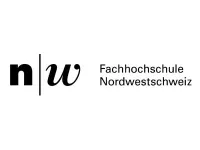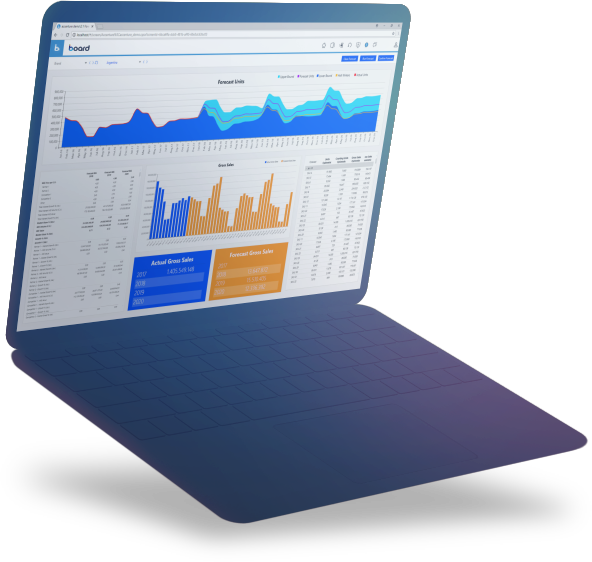
The North West Switzerland University of Applied Sciences (FHNW) - Case Study

- Industry: Government & Education
- Department: All
“With Board the FHNW offers completely new opportunities for reporting. The added value is firstly the stable platform and secondly the flexible design options”. Flavio Gläser, Team Leader Control (Services), the North West Switzerland University of Applied Sciences (FHNW).
Board offers completely new opportunities for reporting
The Company
The North West Switzerland University of Applied Sciences (FHNW) is one of the leading applied sciences universities in Switzerland. It operates in an innovative, practice-orientated way, comprising of nine colleges for teaching, research, further education and services. Its wide range of courses, hands-on attitude, application-orientated approach highly innovative research and global network make the FHNW an attractive, diverse educational establishment, a sought-after practice partner and an attractive employer in North West Switzerland.
The Challenge
Transparency at the university - MIS (Management Information System) with financial and non-financial key performance indicators
The FHNW is characterized by its three major systems that cover the university’s different requirements. Financial and HR data are available in SAP, personnel resources are planned using the workload tool (a bespoke development) and student administration is managed in Evento. This makes efficient evaluation of combined data difficult and complex. With an annual turnover of 445 million Swiss francs and 2,700 staff (as at 2016), the need to control the organization using modern, reliable reporting is vital. Also, with more than 2,400 research, further education and services projects administered by the FHNW, corresponding reports were being emailed to 500 project managers.
In 2015, the Control Managers started a project aimed at speeding up the digitization process in reporting, to develop the control process at the FHNW from a purely data-orientated function to a consulting-orientated function.
More consultancy + less data management = more benefits
The vision was to combine management information into a single system, with the aim of taking more time to evaluate the data in order to support decision-makers more specifically in their deliberations and to be able to show trends over several years.
Using historical data, there was a desire for the reporting system to uncover developments and trends at the touch of a button using dynamic time axis comparisons - whether this involved the origin of the students or profit margin trends in research.
There was also a desire to provide the respective managers with the latest data in an easily understandable form, which would require a central platform to act as a single point of truth, that could be accessed at any time from anywhere. Finally, manual input for reporting was to be reduced to a minimum.
The Board Solution
Once the need for the new solution had been realised, the FHNW Control Department spent time carefully defining which reports were necessary and analyzed which systems could create these in the best possible way. After seeing various solutions the team opted for Board and together with Board experts, was able to implement the initial requirements of the project within just five months.
The implementation took place in two logical layers, with the technical IT basis forming the lower layer. The different system components run on a SQL server, such as the Data Warehouse in which complex ETL processes (Extract, Transform, Load) are mapped. In addition, the project team also decided to introduce a master data management system (MDS) to enhance and monitor master data in order to keep track of some 1,500 active profit centers and approximately 15,000 historical accounting assignments (projects/cost centers/internal orders).
Business applications form the upper layer. Board is used here to access the data in the lower layer to compile the reports. This division enabled the work to be distributed across the Business (Control) and IT departments.
Currently about 50 staff from the upper management levels use the Board solution and at project manager level there are around 400 users who have access to the Board web platform. The platform is easy to use and can be modified flexibly to suit the respective purposes. It was very important for the FHNW that the Board system could be administered by the users in their daily business (control) without programming knowledge being necessary.
The project support team consists of only four people who received technical support from the IT Department. The external specialists only gave support with the introduction and have consequently no longer been required to date. The use of Board at the university is to be extended gradually.
Customer Benefits
Regardless of whether it involves financial reports, personal data, student surveys or the university’s extended service mandate, everything can now be mapped on a single platform.
The major advantages are:
- Extremely user-friendly interface
- Ad hoc evaluations can be created quickly and easily
- Fast preparation of complex reports
- Data drill down possible (from the approximate to the detailed)
- Ability to switch to the associated documents (for example vendor invoices in PDF format)
- Integration of process control rules (project check)
- Simple control of the release of reporting periods
Another important benefit for the university is geomapping. As a university that is close to the border, it is extremely important for decision-makers to know where their students come from and also to be able to display this visually.
The next step consists of optimizing and further developing the reports and screens created. The FHNW has constant discussions with users in order to hone the content and, if necessary, make it more understandable. New requirements from other areas dealing with reporting, for example from HR or Property, are continually added and developed.




